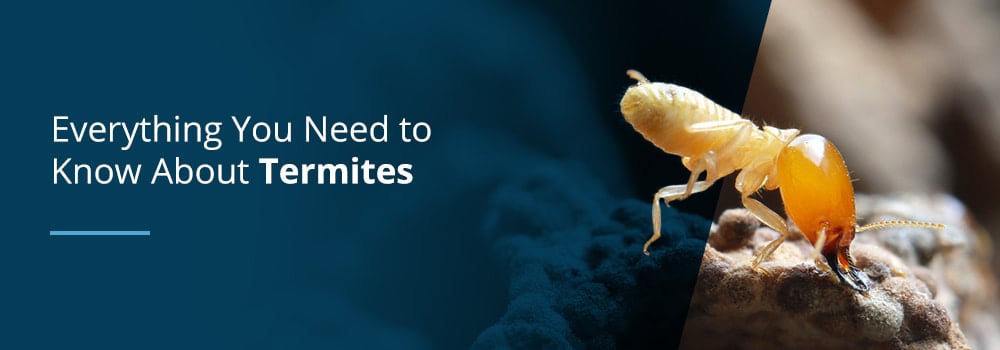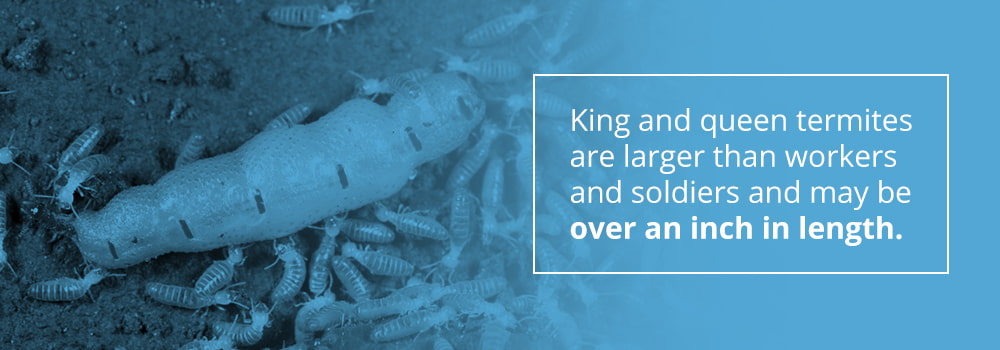Everything You Need to Know About Termites

Does the thought of termites chewing through your walls keep you up at night? If you're worried about termites destroying your home or business, you're not alone. Termites are one of the most destructive pests in the world. As per research papers, published by the Indian Council of Agricultural Research (ICAR), termites cause damage almost $40 billion across the globe & in India 280 million rupees each year,
Even though termites are undoubtedly troublesome, there's no need to panic if you've discovered an infestation. Most homes with an infestation can be saved with the help of professionals. The first step to controlling a termite invasion of any size is to learn what to look for. In this guide, we'll show you everything you need to know about termites to help you get started. We'll answer questions such as:
- What do termites look like?
- What is the life cycle of termites?
- What are the signs of termites in your home?
- What is the cause of termites?
- How do you get rid of termites?
Termites can be a property owner's worst nightmare, but with the help of a professional pest management team, the bad dream doesn't have to last too long. At Lifecycle Pest Control, we've been helping businesses and homeowners solve their toughest pest problems since 2018. If you live in the Pune, Maharashtra and need to protect your home from pests today and tomorrow, contact us at Lifecycle Pest Control to learn more about our services.
Chapter 1: Termite Identification
When some people think of termites, they remember what their parents used to call them as teenagers. For other people, the word "termite" reminds them of their beautiful home being chewed to pieces. Either way, most people associate termites with eating machines, and they're right — termites eat 24/7.
These pests have been around for a long time, so they've been able to develop their skills. Researchers found a termite entombed in amber from the Early Cretaceous period, meaning termites have existed for at least 100 million years. However, termites did not become pests until people started building homes and other wooden structures.
Surprisingly, termites fulfill a critical role in nature because they help eliminate dead wood and return nutrients to the soil. They act as tiny recyclers by processing and discharging organic material, and they work nonstop. As they scurry about and churn the dirt they walk on, they also improve water infiltration, which helps moisturize the soil. Overall, their underground activity helps support the surrounding plant life. But, that's still not a good reason to keep termites on your property.
If you suspect you have a termite infestation in your home or business, your first step is to identify the pest correctly. You'll want to make sure you're dealing with termites and not other insects like ants or cockroaches so that you can take the proper approach to treatment. In this chapter, we'll show you what termites look like so you know how to identify them. If you have any questions along the way, reach out to us at Lifecycle Pest Control, and we'll be happy to help.
What Are the Types of Termites?
There are about 2,500 species of termites worldwide, and approximately 337 species exist in the India. reported 35–40 species of termite species damaging wooden structures and buildings from various parts of India. Termites are typically categorized by the type of habitat in which they live.

- Drywood: Drywood termites infest dry wood and do not need to contact the soil. They may form multiple colonies in a single wood piece or structure and stay hidden in the material they use for food. Drywood termites require very little moisture and can even survive in dead wood found in the desert. They might infest everything from utility poles to furniture.
- Dampwood:: As the name implies, damp wood termites make their homes in moist wood. They can be found feasting mainly in stumps and fallen trees. Dampwood termites require a lot of moisture to survive. This is why they are usually found in decaying wood near a water leak or in an otherwise cool and humid area. A dampwood termite infestation indicates a severe moisture problem as well.
- Subterranean: Subterranean termites occupy the soil and wood that is in contact with the ground. To survive, they must live near a water source or stay in the dirt where they can obtain moisture. They can be found in home structures, fallen trees or stumps, or any dead wood that touches the soil.
Subterranean termites are the most significant economic pest in the India and cause most of the damage home-owners dread. Subterranean termites have existed for more than 55 million years, so they know how to do their jobs. As you'll see in the next chapter, termites have an entire caste system to help them fill different roles and thrive within their colonies.
What Do Termites Look Like?
Termites share similar characteristics with many insects, particularly winged ants.

Like other insects, their bodies are divided into three regions: the head, thorax and abdomen.
On the head, termites have a pair of straight, bead-like antennae. They use their antennae to detect smells. Termites also have chewing mouthparts like ants and grasshoppers. Their strong mouthparts have evolved to help them chew through wood. Soldier termites have large jaws that are used to kill invaders, like ants.
The thorax, or middle region, is divided into three sections with each containing a pair of legs. Mature termites have two pairs of wings attached to the last two segments of the thorax. The wings are long, narrow and of equal length and size. Termites lose their wings after swarming. Most termites, which are called workers and soldiers, do not develop wings.
How Do You Tell the Difference Between Termites and Ants?
Termites can easily be confused with carpenter ants because they're about the same size, and they both like to damage wood structures. They may even be called white ants because they have pale ant-sized bodies. However, there are simple ways to tell the difference between the two. Look for the following characteristics:
- Antennae: Termites have straight antennae, while ants have bent or "elbowed" antennae.
- Waists: Ants have pinched waists, and termites have broad waists.
- Wings: Reproductive ants and termites both have four wings. However, they don't look the same. Ants have forewings that are much bigger than their hindwings. Termite wings, on the other hand, are all the same shape and size. Wing colors vary between the two insects as well. Ant wings are typically either transparent or brownish, while termite wings have a milky color.
How Big Are Termites?
If you're going to find a termite, it'll most likely be a worker, and workers are not very big. Generally, worker termites range in size anywhere from about 6 mm to 10 mm long, but they may be slightly smaller or bigger. Soldier termites may appear larger due to their shielded heads and strong jaws. You might compare the size of a termite to a carpenter ant, which is also typically 10 mm long.

King and queen termites are larger than workers and soldiers and may be over an inch (25 mm) in length. It's not likely you'll see the king and queen, though, because they seal themselves in an underground chamber where they spend their lives.
Are Termites Visible to the Human Eye?
Yes, termites are large enough to see with the naked eye. Generally, humans can see objects as small as 0.1 millimeters without the use of tools like microscopes. Since termites range in size from about 6 mm to 25 mm, you should be able to spot them just fine.
Can Termites Fly?
Yes, some termites fly at certain times of the year. A termite colony will produce winged reproductive offspring called swarmers. Swarmers fly in large numbers to disperse and start new colonies with their chosen mates. Swarmers usually leave their original colonies during the spring to start termite "families" of their own, but they don't fly too far. Swarmers shed their wings after they land.
Are Flying Termites Dangerous?
Flying termites are not dangerous, though they usually indicate an infestation nearby. A flying termite's primary purpose in life is to reproduce and build a new colony — that's it. Worker termites are the ones that eat through wood and cause structural damage.






